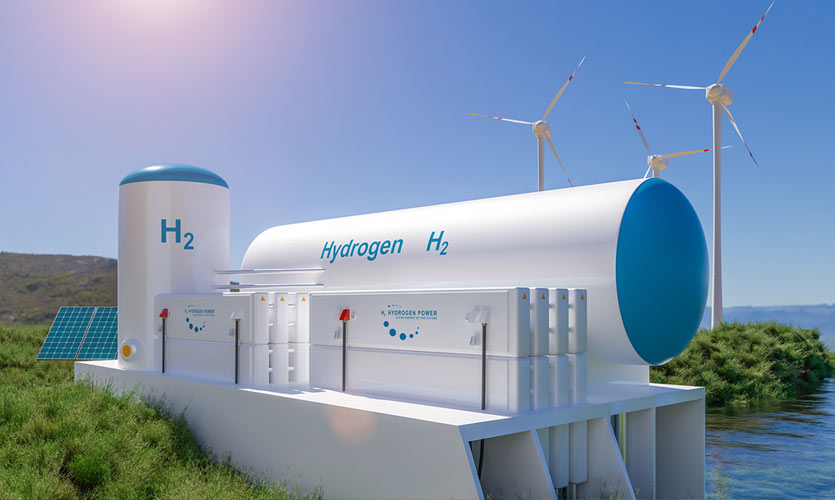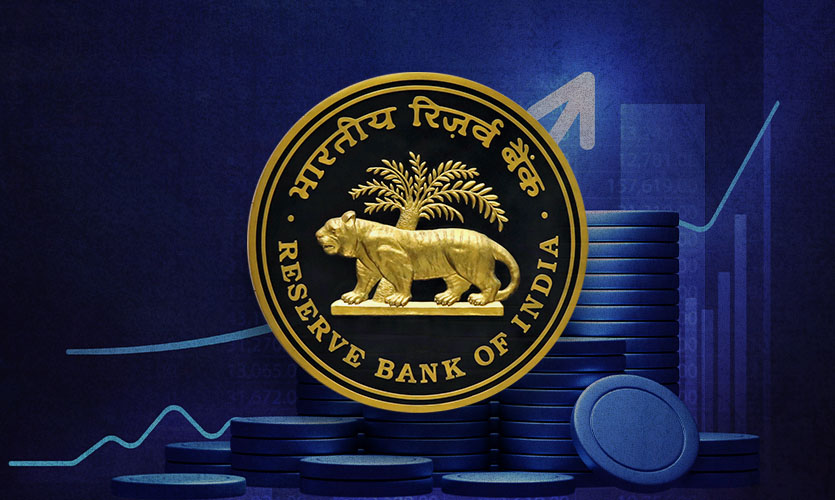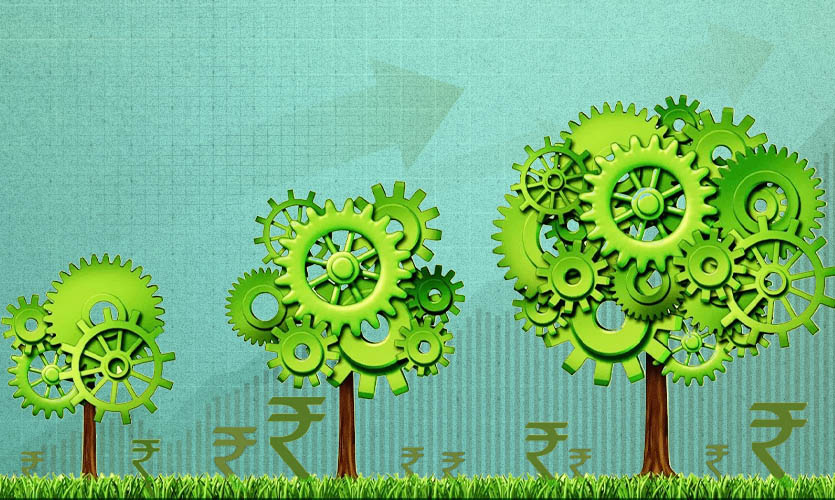As India marked its 74th Independence Day in August, Prime Minister Narendra Modi announced the National Hydrogen Mission – an effort made to propel India’s commitment to tackling climate change and global warming. The aim of the mission is to make the country a global hub for the production and export of green hydrogen, as well as become self-reliant when it comes to meeting its energy needs.
“India is not energy independent. It spends over ₹12 lakh crore on importing energy. We need to become energy independent before 100 years of independence are completed,’’ the PM said.
Green hydrogen, a truly zero-carbon fuel, has become one of the most crucial investments of governments and energy companies all over the world in the race to green transition. India’s green hydrogen playbook involves a gradual increase in the use of green hydrogen instead of fossil fuels in refineries and fertiliser plants by implementing mandates. The plan also involves leveraging the country’s large landmass and low solar and wind tariffs to produce low-cost green hydrogen and ammonia for exports.
What Is Green Hydrogen?
Hydrogen is an energy carrier that has to be produced, or extracted and stored, before it can be put to use unlike fossil fuels or renewable sources like sunlight and wind that act as a source of energy. There are several ways to extract hydrogen, regardless, the by-product of burning hydrogen is water.
According to the World Energy Council (WEC), “Combusting one kilo of hydrogen releases three times more energy than a kilo of gasoline and produces only water.”
The term “green” hydrogen depends on how the hydrogen is produced. If the electricity used in the process comes from a renewable source such as wind or solar then it’s termed “green” or “renewable” hydrogen.
Indian Government’s Plans So Far
India’s grand plans for green hydrogen were cemented by Finance Minister Nirmala Sitharaman when she announced that the Hydrogen Energy Mission will be launched during the financial year 2021-22, during her budget speech on February 1, 2021. India currently imports 85 percent of its oil and 53 percent of gas demand.
The PM’s independence day announcement came at a time when India’s oil and gas production has been falling. India saw its domestic crude oil and gas production fall by 5.22 percent in April 2020, and by 8.06 percent in March 2021.
The Indian government has chalked up plans to implement the Green Hydrogen Consumption Obligation (GHCO) in fertiliser production and petroleum refining. The plan is similar to the renewable purchase obligations (RPO) that require companies involved in electricity distribution to buy a fixed amount of renewable energy, in an attempt to curb the country’s reliance on fossil fuels. India’s total hydrogen demand is expected to touch 11.7 million tonnes by 2029-30, from the current 6.7 million tonnes.
India has kickstarted efforts to encourage the use of hydrogen as a transport fuel, with some buses running on hydrogen blended fuel on a trial basis. In early August, Indian Railways invited bids to explore if diesel-fuel trains could operate using hydrogen by retrofitting the diesel-powered Diesel Electric Multiple Unit (DEMU) into a hydrogen fuel-based train. Earlier this year, the Indian Oil Corporation Limited announced it would set up the country’s first green hydrogen plant at Mathura Refinery.
The government also aims to halve the cost of hydrogen produced by electrolysis to ₹160 per kg by 2029-30 from around ₹350 per kg. The production-linked incentive (PLI) scheme will also be extended for manufacturing electrolysers to produce green hydrogen. The use of green hydrogen is also expected to cut down the imports of ammonia and natural gas required for fertiliser production, said Fertiliser Minister Mansukh Mandaviya.
Private Sector Eyes Green Hydrogen Market
In March, the Nasdaq-listed Fusion Fuel Green based in Ireland and Portugal announced that it had signed an agreement with BGR Energy Systems, a Chennai based engineering, procurement and construction firm. The agreement was centred around the firms looking to set up a demonstration facility using proprietary technology from Fusion Fuel Green to produce hydrogen using solar energy in Cuddalore, Tamil Nadu, later this year.
Following the establishment of the initial plant, the companies will focus on the development of bigger projects in the region. In a statement issued alongside Fusion Fuel Green’s announcement, Arjun Govind Raghupathy, who is the managing director of BGR Energy, said his firm was thrilled “to be taking these steps to establish a foothold in the burgeoning green hydrogen industry.”
Mukesh Ambani and Gautam Adani run companies have also announced ambitious plans of embracing hydrogen as fuel as the nation transitions.
Read more: India’s Economic Resilience And The Need To Focus On An Inclusive Future
Geopolitical Implications And Challenges Ahead
In a telephonic conversation, the Minister of Power, R.K. Singh told the US’ Special Presidential Envoy for Climate (SPEC), John Kerry, that India will invite bids for green hydrogen in the next three to four months to encourage viable usage of hydrogen as a fuel. According to a power ministry statement, India is looking at bids for 4,000 MW of electrolysers capacity. The statement further added that Kerry congratulated India on achievements in renewable energy on reaching 146GW renewables with 63 GW under construction and 25 GW under bids.
In recent news, the Indian company ACME and Oman signed a land reservation agreement for a green hydrogen and ammonia project. The deal is part of a plan by Oman’s Public Authority for Special Economic Zones (where ACME aims to set up) and Free Zones, to promote investment in clean energy by producing hydrogen and ammonia from renewable energy to boost its use.
With each region having its own strength and strategic priorities, the plan to upscale green hydrogen could give India a competitive edge and encourage new international agreements on hydrogen trade. For example, the Hydrogen Taskforce launched by India and the US under the aegis of their Strategic Clean Energy Partnership (SCEP) has prompted the formation of new alliances.
The energy demand is expected to double by 2040, and though the country is making strides towards harnessing various renewable energies, the inherent limitation lies upon India’s ability to implement a sustainable supply chain and a solid energy policy. These are imperative to ensure that production costs are lower so that the green hydrogen energy market is able to compete with fossil fuels and other renewables in terms of pricing.
According to the WEC, “Recent government commitments for large-scale production and consumption of hydrogen are rapidly establishing deep foundations for a hydrogen economy.” However, the council also notes, “The single greatest challenge in realising the hydrogen and fuel cell potential is predictable and consistent energy policy.”










